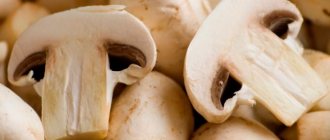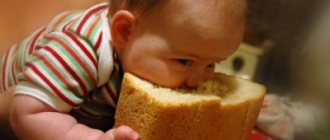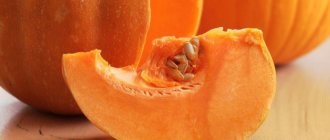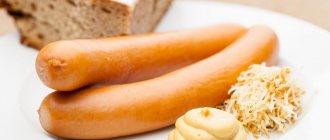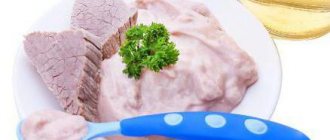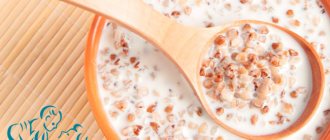Wheat is a common cereal crop. It is difficult to imagine modern life without products made from this cereal. Bakery products are baked from wheat flour and pasta is made. Wheat contains a number of useful substances. However, wheat porridges, unfortunately, are not very popular. Wheat porridge is very healthy for babies, but for certain reasons it is introduced into complementary foods a little later than some other porridges. Let's figure out why.
To turn wheat into wheat cereal, it is crushed and ground. If wheat is crushed to grains of a millimeter diameter, then such cereals will be called semolina. For the production of wheat cereals, different varieties of wheat can be used: spring and winter.
Composition and calorie content
The range of useful substances in wheat cereal is very rich.
100 g of cereal contains:
- carbohydrates 70 g;
- fat 1 g;
- proteins 16 g.
Most of the carbohydrates are starch (50 g/100 g); cereals contain less simple sugars.
- Proteins include nonessential and essential amino acids (proline, valine, tryptophan, phenylalanine, isoleucine, glutamic acid).
- The vitamin composition of the cereal includes vitamins , , K, H, PP, niacin, B1, B2, B4, B5, B6, B9.
Wheat cereal contains macroelements:
- potassium;
- chlorine;
- sodium;
- phosphorus (250 mg/100 g);
- calcium (250 mg/100 g);
- magnesium;
- sulfur (100 mg/100 g);
- silicon.
An even more extensive set of microelements:
- manganese;
- iodine;
- copper;
- zinc;
- aluminum;
- iron;
- cobalt;
- vanadium;
- titanium;
- nickel;
- molybdenum;
- selenium;
- boron;
- tin;
- zirconium;
- strontium.
The energy value of 100 g of wheat cereal is 335.5 kcal. 100 g of viscous porridge cooked in water contains only 65 kcal, 100 g of crumbly porridge - 100 kcal.
Porridge cooked in milk with the addition of butter and sugar contains 200-250 kcal per 100 g (depending on the amount of additives).
Application of cereals
Types of muesli flakes 100 grams of wheat cereal contains 340 kilocalories. Daily intake should not exceed 70 grams. This is at average weight. In general, the calculation is made as follows: 10 grams of cereal per 10 kilograms of weight. It is best to use cereal for breakfast. You will remain full until lunch, and the resulting energy will be useful for work and active movement. Soup with wheat cereal is useful for children after one year and adults of any age.
Nutritional value of oatmeal Muesli
is very popular now - flattened grains plus pieces of fruit. Muesli is convenient, attractive and interesting. Multiple types: oatmeal, wheat, rice, corn help diversify baby food after a year, add unusualness and calorie content to the diet. Of course, you can’t make soup from muesli, but you can provide breakfast to your family in a few minutes.
Eastern cuisine is famous for its spicy dishes. Cereals with the addition of certain ingredients can bring a breath of freshness to the family kitchen. But children after a year are not supposed to have such soup, thick, hearty and peppery. It is better to prepare a regular soup of wheat, potatoes, carrots and onions in weak chicken broth. Children will love this dish and it will be healthy.
With the skillful hands of skilled chefs, cereals are transformed into wonderful puddings, casseroles, cutlets and even meatballs. But parents are concerned about age-specific characteristics, in what form wheat cereal is most beneficial for children, and at what age its use begins. Caring for the health of their children, parents are ready to make every effort and imagination.
Muesli
Benefit
The rich composition of wheat cereal provides dishes prepared from it with a number of beneficial properties.
Wheat cereal has many beneficial properties:
- The ingredients of wheat cereal provide elasticity and density of the vascular wall, increase blood clotting, which is important for children with increased bleeding.
- Magnesium, phosphorus, thiamine (B1) and pyridoxine (B6) are necessary for the normal development and functioning of the nervous system and brain. They improve sleep and the child becomes calmer.
- Wheat grain fiber normalizes the functioning of the digestive tract and helps cope with constipation in children. Dietary fiber helps cleanse the body of toxins, drug residues after illness, and toxins.
- The minerals in the porridge (calcium, phosphorus, silicon) will ensure the formation and strength of the bone skeleton and tooth enamel.
- Due to the low glycemic index, wheat porridge does not lead to a sharp increase in blood sugar levels, but gives a feeling of fullness for a long time.
- Minerals from wheat porridge help normalize acid-base balance and water-electrolyte balance in the body.
- Magnesium, potassium, pyridoxine (B6) ensure normal heart function and prevent cardiovascular pathology.
- Eating wheat porridge speeds up wound healing.
- Vitamins A and B2 increase visual acuity.
- Choline contained in porridge regulates fat metabolism, which is used by nutritionists in a therapeutic diet for obese children.
- Eating wheat porridge will give the child strength and energy, have a general strengthening effect, and increase the body's endurance and immunity.
The benefits of millet porridge with milk for a child
It’s not for nothing that millet porridge is one of the most popular dishes. “Golden groats” is what our ancestors called millet. This name is fully justified by the large amount of vitamins, minerals, high energy value and, of course, the yellow color of the cereal.
- With all these advantages, millet is affordable. So, what exactly are the vitamins and minerals found in millet?
- Millet contains a lot of B vitamins.
They support healthy hair and skin, are necessary for the body’s muscle tissue, and are responsible for the stability of the nervous system and good sleep. - Vitamins E and A
ensure visual acuity, prevent fatigue, and have a beneficial effect on the functioning of the liver, respiratory tract and thyroid gland. - The minerals potassium, magnesium, calcium, phosphorus
are needed for the cardiovascular and skeletal systems, iron regulates hematopoiesis and, zinc helps the liver, iodine is necessary for the endocrine system, copper prevents and. - Fiber
promotes good functioning of the gastrointestinal tract, improving digestion. - Millet is easily absorbed by the body and is a hypoallergenic grain that does not contain gluten. It is useful for people with diseases of the pancreas, liver, and diabetes. Millet removes toxins from the body and is especially important to use after taking antibiotics.
Millet is introduced into a baby's diet after rice and corn cereals, usually at 8-9 months. The introduction occurs gradually, starting with 3-5 grams of porridge. The first porridge is prepared from millet flour and water. The finished porridge is diluted with breast milk or the formula that the artificial baby eats.
Millet flour is obtained by grinding whole millet in a coffee grinder. By 11 months, the grinding can be coarser. And from 14-16 months you can cook whole millet. As always, when introducing a new product, it is advisable to give millet porridge in the morning, after feeding. This is necessary to monitor a possible allergic reaction, although allergies to millet are very rare. In the absence of allergic manifestations, increase the amount of porridge, bringing it to the serving size.
Children 10-12 months old can use cow's milk to prepare millet porridge. When purchasing milk, give preference to special baby milk. Even in the first few doses it is recommended to dilute it with water in a 1:1 ratio.
To prepare delicious millet porridge with milk, it is important to choose the right millet:
- choose hermetically sealed millet;
- make sure there is no debris;
- the color of the millet should be dull and yellow;
- Pay attention to expiration dates - old millet is bitter.
Do not buy millet for future use. During storage, fats oxidize and taste deteriorates.
Possible harm and contraindications
Wheat porridge can have the most pronounced negative effect on the body of a child with celiac disease. This is the inability to digest gluten, a protein found in many grains, including wheat.
Sometimes this disease is diagnosed only at 2-3 years of a child’s life, when he begins to receive dishes made from cereals, that is, with gluten. Gluten, or gluten, irritates the intestinal mucosa, which leads to disruption of its functioning, although other organs also suffer. It is gluten that contributes to the development of allergic reactions.
Symptoms of celiac disease may include:
- retardation in height and weight;
- bowel disorders;
- abdominal pain, etc.
If the diagnosis of celiac disease is confirmed, wheat porridge and other dishes made from wheat cereals are completely excluded.
- Digestive disorders appear when wheat porridge is included in the diet of children suffering from chronic gastritis with low acidity. This is due to the presence of gluten and a large amount of starch in wheat porridge.
- It is not recommended to give a child wheat porridge in the early postoperative period after abdominal surgery.
- Digestive dysfunction can also occur as a result of exceeding standards when preparing a dish, increasing portions, or eating porridge too often.
- Children with lactase deficiency (inability to digest milk sugar) should not eat porridge cooked with milk.
Millet porridge with milk in a slow cooker
Required Ingredients
- 1 measure of cereal;
- add sugar and salt to taste;
- 4 measures of milk;
- butter – 30-40 grams.
From a certain period, the diet of a baby requires expansion. Complementary foods in the form of vegetable and fruit purees and cereals are added to breast milk or formula. The most satisfying component is, of course, porridge. Many mothers begin to feed their baby regular cereals, which are ground in a coffee grinder or crushed after cooking. Pediatricians advise choosing store-bought milk and dairy-free cereals from popular brands for babies, since they are more adapted to the needs of the infant’s undeveloped gastrointestinal tract, have an adequate consistency, are safe and are rich in vitamins and microelements. Let’s decide which cereal is most suitable for the initial stage of complementary feeding, how to choose a product, and how suitable is wheat porridge for expanding a baby’s diet?
Millet porridge is loved by many people, but can it be given to a baby as complementary food?
How to select and store wheat cereals
Spring wheat has more beneficial properties, but in the fall it is not always possible to find cereals made from it, since the new crop has not yet been processed. During this period, it is better to take cereals from winter wheat, since last year’s spring wheat has already lost its quality.
This means that you need to pay attention to the production date, which is more important than the packaging date. The shelf life of the cereal is 12-14 months. But for porridge, it is advisable for a child to buy it produced no more than 8 months ago.
- Through the transparent packaging, you can evaluate the flowability of the cereal: it should not stick together into lumps.
- The larger the grain crushing, the more beneficial properties.
- You should not buy wheat flakes used for quick preparation of porridge, as they are the least healthy.
- High-quality cereals are light brown in color and do not contain unhulled grains or foreign additives.
At home, cereals can be placed in a glass, plastic or ceramic container with a tight-fitting lid, away from products with a strong odor. The optimal temperature for storage is 18 0C with a humidity not exceeding 70%.
Requirements for baby's first cereals
Your son or daughter's first porridge must meet the following requirements:
- It must be hypoallergenic. Cow's milk protein and gluten are the only acceptable substances in baby cereal that can potentially cause allergies, but this is an uncommon individual characteristic of infants.
- It cannot contain pieces of fruit, salt and sugar.
- One type of gluten-free cereal – buckwheat, corn, rice, millet.
The recommendations provided by pediatricians in most cases state that healthy babies who are breastfed can start eating porridge from six months. Artificial babies usually start feeding earlier, from 4-5 months.
Some parents, however, are in no hurry with complementary feeding or focus on the appearance of the first tooth.
When and how to introduce it into the diet
Wheat porridge can be introduced into a child’s diet starting from 1-1.5 years.
According to the unanimous opinion of nutritionists and pediatricians, you can start giving wheat porridge to your baby no earlier than one year of age.
In no case is it suitable for the first and second complementary foods. If a child is prone to allergies, the introduction of wheat porridge into the diet should be delayed until 1.5-2 years.
The first portion should be no more than a dessert spoon for a child over one year old. It is better to give it before breakfast in order to be able to observe the baby’s condition. In the absence of undesirable manifestations, the portion is gradually increased to the age norm, which is best determined together with the local pediatrician.
- Wheat porridge can be given to a child with vegetables, meat and fish cutlets.
- You can continue to cook it with water, or you can also cook it with milk, adding butter and sugar. Milk is added to the finished porridge.
- You can add pieces of fruit, dried fruit, and chopped nuts to the dish.
How to choose millet for baby food?
When buying millet from which porridge for a child will be cooked, you should carefully examine the grains and inquire about the expiration dates. It is advisable to buy millet for children in transparent packaging, since bulk cereals are exposed to various external factors, which can cause them to deteriorate or lose useful substances. Choose millet with a matte surface, bright yellow color, and no debris.
It is not recommended to store millet at home for a long time, since due to the oxidation of fats, the stale grain begins to taste bitter. Keep the beans in an airtight container in a cool place away from sources of moisture.
For more information about the benefits of millet and millet porridge, see the following video.
It's no secret that a child's diet should be rational and varied. Nutrition is the key to the proper development and growth of the baby. Porridge is the basis of the diet of children from 6 months and older. In cases where a child lags behind in weight gain, porridge is introduced into complementary foods first. Rice, corn, buckwheat, millet - all these porridges have firmly entered the menu of children in our country. Today we will prepare milk millet porridge.
How to cook
Wheat porridge for a child is easy to prepare.
To do this you should:
- take half a glass of wheat cereal, rinse thoroughly with water (porridge made from unwashed cereal will be slimy and viscous);
- pour it into a saucepan and add 1.5 cups of filtered water;
- Cook the porridge over moderate heat until tender (about 30 minutes), stirring occasionally;
- pour in 0.5 cups of hot milk and cook for another 5 minutes while stirring;
- add 0.5-1 tsp. butter;
- add an apple, chopped using a fine grater or blender (without the core), to the porridge.
When preparing dairy-free porridge, wheat grits are poured with triple the amount of water and cooked until tender.
Instead of an apple, you can add chopped banana. If you are not allergic, you can pour fruit syrup over the porridge and add honey.
Millet porridge with milk - recipe
Millet porridge with milk will turn out delicious if you carefully follow the proportions: the volume of cereal to liquid should be 1 to 4.
Required Ingredients
- millet – 100 grams;
- water – 200 ml;
- milk – 200 ml;
- butter – 25 grams;
- flavor enhancers (salt, sugar) - to taste.
Cooking sequence
To improve the taste, berries, fruit puree or pieces of fruit, and jam are added to the porridge.
Millet porridge: pros and cons for babies
Millet porridge for babies is one of the most popular products in the diet. It is also a tasty and healthy addition to the diet for babies. Benefits of millet:
- removes toxins from the body;
- it contains the largest amount of vitamin B6 compared to other cereals;
- rich vitamin and microelement composition;
- high content of vegetable fats and fiber;
- low glycemic index, which promotes weight stability;
- absence of gluten, due to which the porridge is considered low-allergenic.
Harm of wheat porridge:
- millet protein is characterized by low nutritional value;
- porridge is very difficult to digest, so it is not recommended for the first feeding;
- Difficulty in preparation - the cereal must first be washed well so that it does not become bitter; it takes a long time to cook and has a bitter taste.
Millet porridge for children, especially those made from whole grains, is difficult to digest. It is she who takes a long time to prepare and is bitter. If we are talking about porridge made from flour, then the situation changes radically. This product can be purchased in the baby food department.
Please note that the smaller the child, the higher the grinding degree should be. After your baby reaches nine months, you can prepare the cereal yourself - grind the millet in a coffee grinder. Wash and dry the beans before grinding.
Millet is not the best option for starting complementary feeding. The easiest is buckwheat or rice porridge. Then include millet in your diet. Start with 1 teaspoon in the morning. There were no allergies or negative reactions from the gastrointestinal tract - double the dose the next day. By the age of one year, you can give 200 g of porridge every day. Alternate cereals; you don’t need to feed your baby the same cereal all the time.
Healthy and tasty recipes
The simplest and fastest recipes for delicious millet porridge for infants and children over one and a half years old:
- The smallest. Boil 150 ml of filtered water, add 10 g of pre-prepared millet flour, cook for three minutes. After this, you can add fruits or berries that the baby loves and tolerates well. The main thing is not to add them to the boiling porridge, let it cool and brew.
- From 1 year to one and a half years. Half a glass of coarser millet flour pour 200 ml of water, cook for 5-10 minutes. The dish has been steeped and cooled a little - add fruit and sugar there according to the baby’s wishes and the body’s tolerance.
- After a year and a half. Pour half a glass of classic millet with water in a ratio of one to three and cook until the cereal is ready. During cooking, you can add your baby’s favorite fruits if he likes this sweet option. After the dish has cooled, add dried fruits, you get a quick version of Christmas kutia.
Pediatricians advise choosing ready-made porridges from well-known manufacturers, which contain millet in the consistency required for babies.
One of the most beloved dishes with millet by both children and adults is pumpkin porridge. It can be cooked with rice, but it can also be cooked with millet. It’s very healthy and tasty, and if you add pieces of dried apricots to the finished dish, it’s also beautiful. Recipe for porridge with pumpkin and millet:
- Take 200 ml of water and 100 ml of milk, 100 grams of peeled fresh pumpkin and half a glass of millet. For the finished porridge - butter, dried apricots, salt and sugar to taste.
- Cut the pumpkin (see also:).
- Boil water, lightly salt it and pour the millet into it.
- When the cereal is cooked until half cooked, add the pumpkin and pour in the milk. Be careful not to burn the milk.
- Cook the porridge until done. After removing from heat, leave to simmer for 15 minutes.
- Add butter, sugar, chopped dried apricots.
If you want to get an initially sweet version of the dish, then add dried apricots and sugar before removing the pan from the heat. The dried apricots will swell and transfer their sweetness to the cereal and pumpkin. However, such porridge can no longer be served as a side dish, but only as a dessert or a separate dish.
